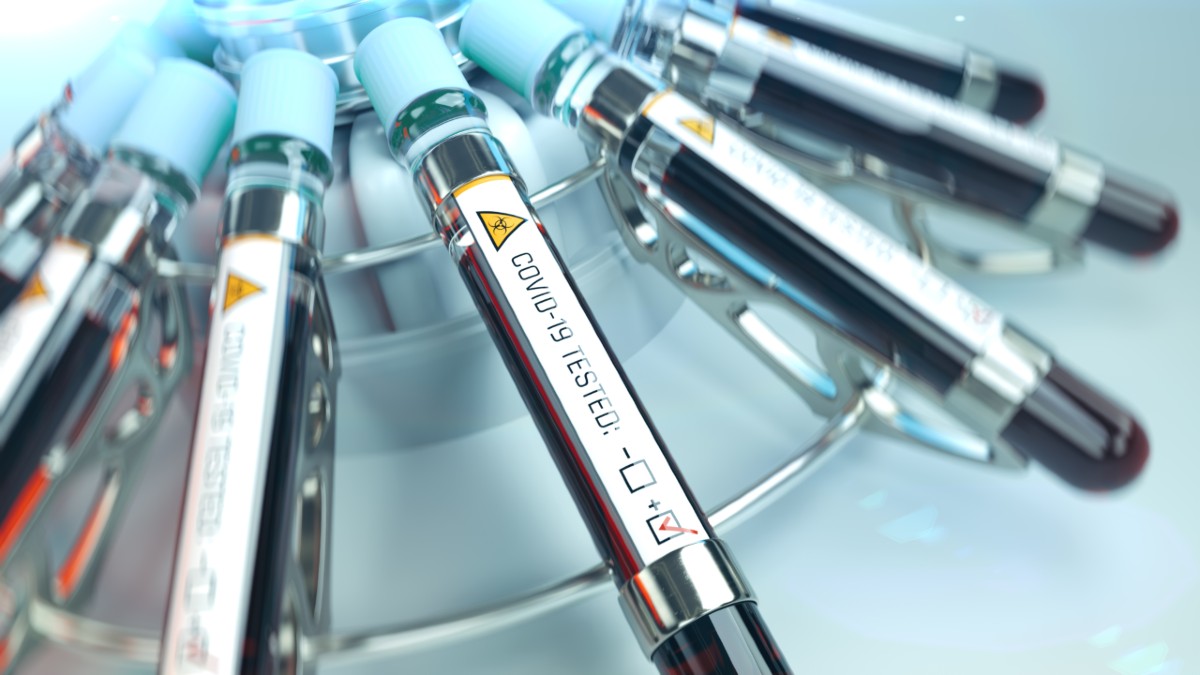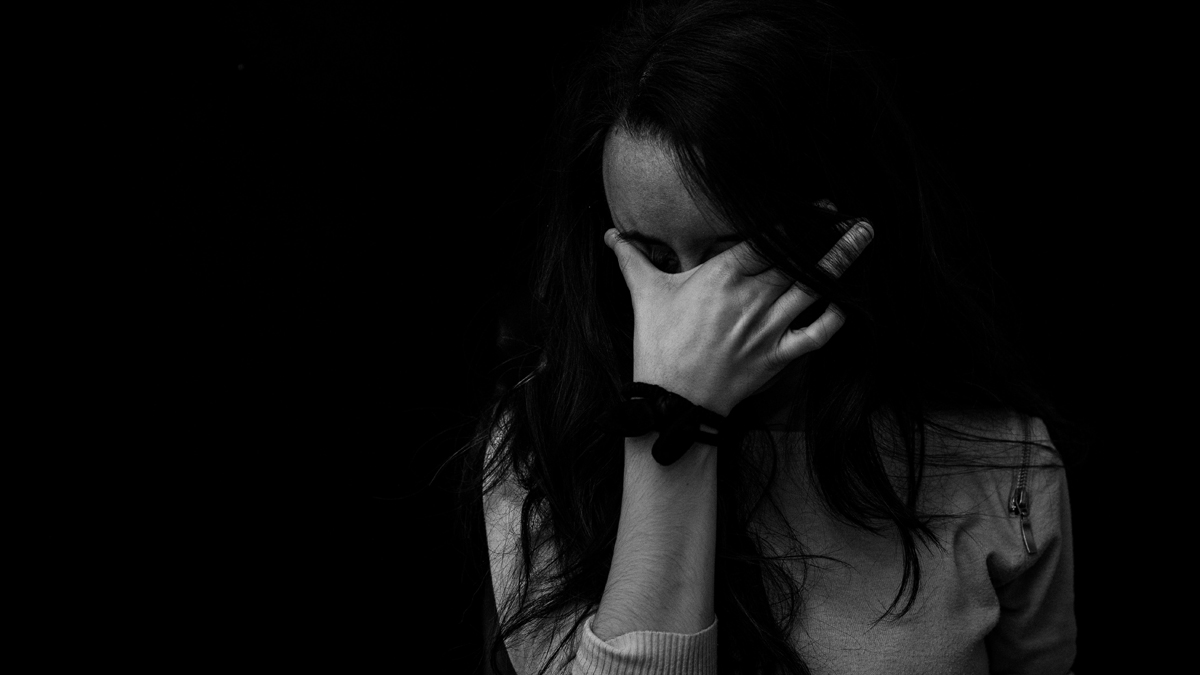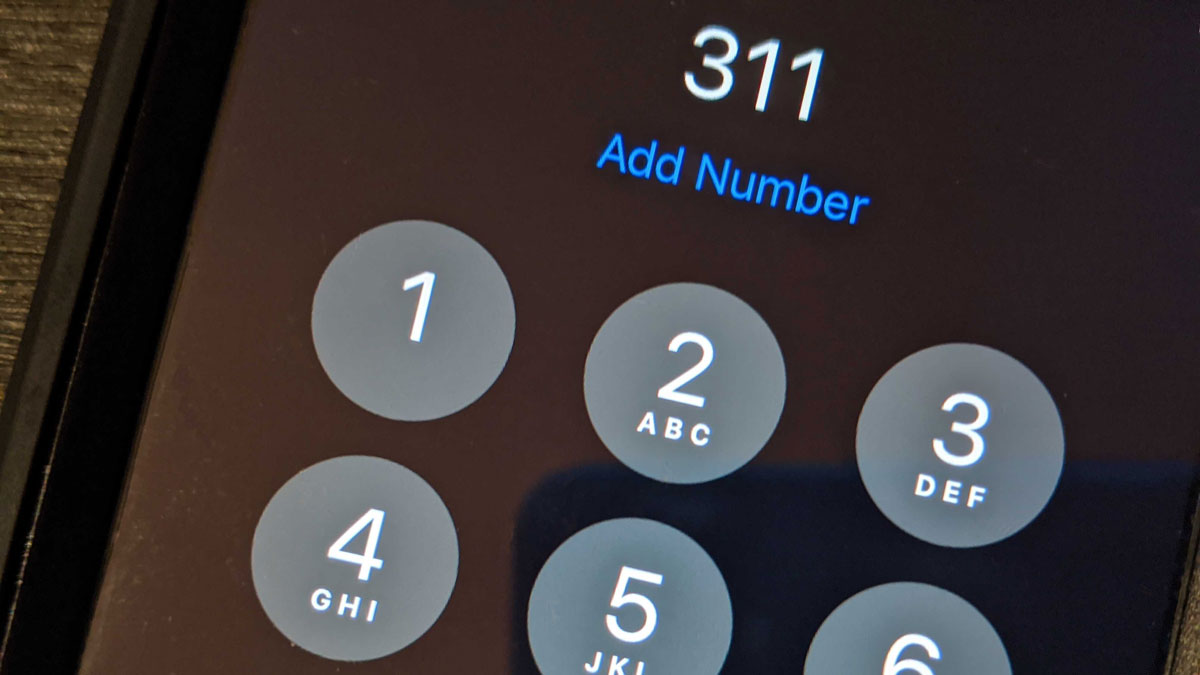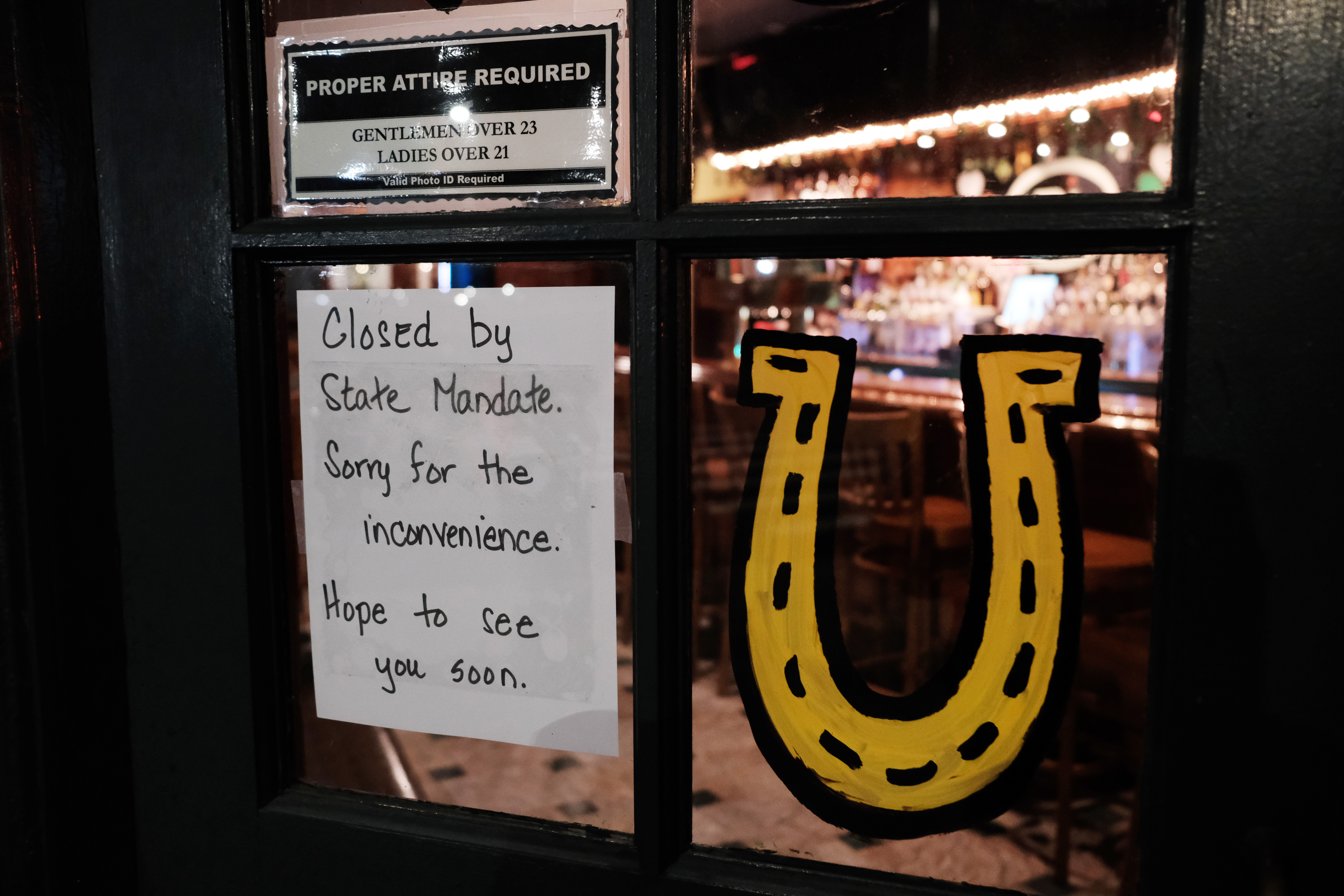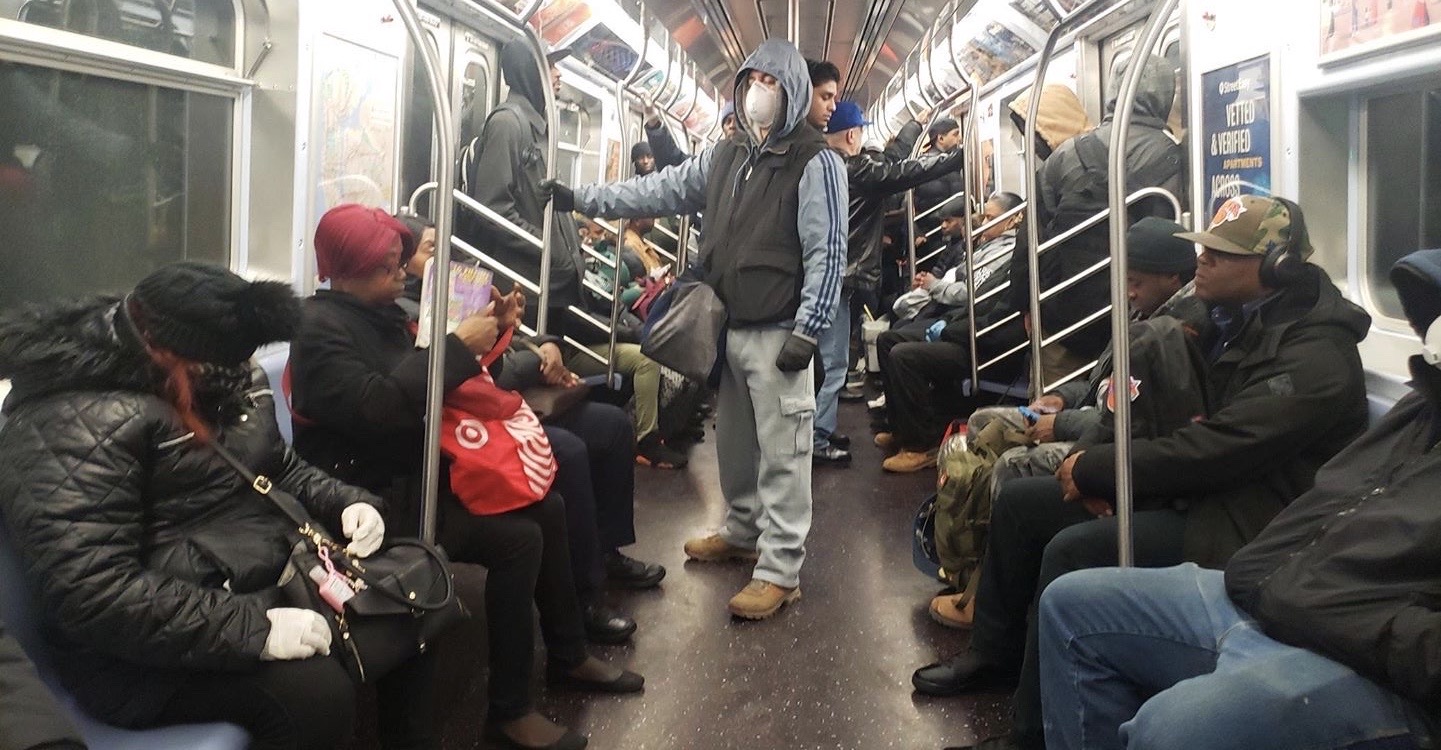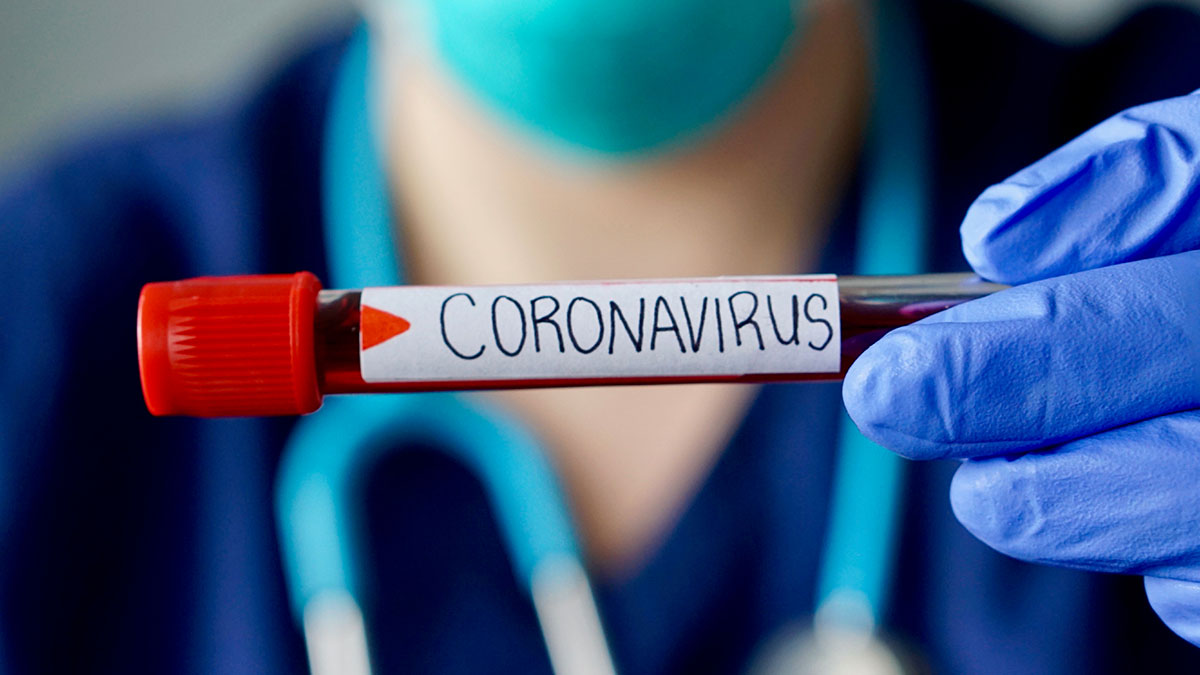What to Know
- New York, New Jersey and Connecticut are on "pause," shutting down all non-essential businesses and enacting new density control measures; President Trump has approved major disaster declarations for New York and New Jersey, opening up billions in urgently needed funding
- As of Thursday, more than 46,000 people in the three states had tested positive for COVID-19 and at least 571 have died. NYC has more than 23,100 cases alone and accounts for 30% of all cases in America
- Tri-state governors say the $2.2 trillion Senate relief package, while a first step, gives them just a "drop in the bucket" compared with need; meanwhile, initial unemployment claims nationwide hit 3.28 million Thursday, nearly 5 times the previous all-time record
Makeshift morgues. Cases doubling every 72 hours. Death tolls spiking. Economic shutdown. Staggering unemployment. Not enough aid.
The tri-state area is grappling with a months-long crisis that has shown no signs of slowing soon. The curve will flatten eventually, but meanwhile entire states, cities and everyday people are just struggling to figure out how to survive.
"This will change us," Gov. Andrew Cuomo said Thursday. "This is going to form a new generation, and it will transform who we are and how we think. But no one is alone."
As of Thursday evening, nearly 39,000 cases had been confirmed in New York, an increase of more than 6,000 from the night before. At least 469 people have died. The city, impaired by the density that makes it one of the world's most vibrant places, bears the brunt of the impact, with over 23,000 cases across the five boroughs as of Thursday night.
The mayor's office said Thursday the death toll had soared to 365 — that's almost a third of the total fatalities nationwide, according to NBC News estimates. Fifty more people have died in the city over the past three weeks as a result of COVID-19 than the city's entire homicide total for 2019. A makeshift morgue is being set up at Manhattan's Bellevue Hospital to manage the wave of bodies, a measure used in the past for mass casualty events like 9/11.
Tracking Coronavirus in Tri-State
Cuomo says he operates based on facts, and he said Thursday the facts are such that "almost any scenario that is realistic will overwhelm the current capacity of the health care system."
One hospital in the city, Elmhurst Hospital in Queens, had 13 patients being treated for COVID-19 die over the span of 24 hours, according to NYC Health & Hospitals. In a statement, the hospital group said the number was "consistent with the number of ICU patients being treated there," with Elmhurst being "at the center of this crisis." Before the sun even rose Thursday, the line to get tested at Elmhurst stretched a full city block. The hospital had four more patients die since Wednesday from coronavirus-related illnesses.
Mayor Bill de Blasio said getting that facility what it needs is top priority, tweeting Thursday, "Elmhurst Hospital is at the center of responding to this crisis. It’s the number one priority of our public hospital system right now. The staff on the frontlines are going above and beyond. We’re doing everything we can to get them what they need." Later, the mayor said that 40 ventilators were being shipped to help alleviate some of the issues there.
At Mount Sinai, a nursing manager was listed among the recent fatalities. He was in his 40s. The hospital debunked a widely circulated social media photo that appeared to show nurses wearing 33-gallon garbage bags as makeshift gowns.
In a statement Thursday, Mount Sinai said the "troubling photo" shows the nurses in proper PPE underneath the garbage bags. “The safety and protection of all Mount Sinai staff and patients is always – and will always be - our absolute top priority, but especially during the COVID-19 crisis. When it comes to staff wearing personal protective equipment (PPE), the facts are very different than recent media reports. To be clear: we always provide all our staff with the critically important PPE they need to safely do their job," the hospital said.
Cuomo said Thursday his office has reached out to city hospitals and while there may be some spot issues with distribution, they say they have adequate personal protective equipment for now. If they find themselves short, the governor said he'd have the state send more, adding "we have enough PPE for the immediate need." Mayor de Blasio echoed those sentiments, saying he knows the city has the supplies necessary for the rest of this week and hopes they will be able to get through next week as well.
"You deserve, and you must have, and you will have all the supplies you need. One way or another, we're going to get them to you every day," de Blasio said. "My commitment is: If it's available anywhere in the United States of America and we can get our hands on it, we will get those supplies to you immediately."
But New York doesn't have enough to last much longer, given an infection rate that Cuomo said earlier this week "continues unabated."
Coping With the Crisis
Actual hospitalizations from COVID-19 were rising faster than initially projected in the state, Cuomo has said, as he warned a tidal wave would crash on the health care system in just a few weeks. States are working with FEMA to construct field hospitals to care for non-COVID-19 patients and relieve the burden on hospitals, which Cuomo has ordered to boost capacity by at least 50 percent (though he has said he'd like to see 100 percent).
New York state has a new goal — to get 1,000-plus bed overflow facilities in all five boroughs as well as in Westchester, Suffolk, Nassau and Rockland counties, the governor said Thursday. The state is also working to shift some patient load from overwhelmed downstate hospitals to upstate facilities, he said.
Likewise, Mayor de Blasio said he wants hospital bed capacity to be tripled by May 1 — from the 20,000 the were at before the outbreak, to up to 60,000. THe city is currently at 34,000 beds.
New Jersey, which is working with FEMA on field hospitals in four locations, including at the sprawling Meadowlands sports complex, has endured growing tragedy as well. Gov. Phil Murphy has announced record daily death increases for three consecutive days, adding another 19 Thursday for a total of 81 to date. He also announced the state saw nearly 2,500 new cases overnight, it's biggest single-day increase. New Jersey now has the second-highest case total (6,876) in America. New York is the only state with more.
"Wars take a long time," Murphy said Thursday. "This one is no exception."
The governor's repeat efforts to get more federal help were rewarded Wednesday night, with President Trump approving a major disaster declaration for his state as it did for New York, opening up billions in urgently needed funding.
There is more hope. Cuomo said Wednesday that it was taking more time for the number of hospitalizations to double -- from every two days on Sunday to nearly every five days by Tuesday. He said that may be an indication that social distancing measures and other drastic restrictions on public life are working.
A data company's new social distancing scoreboard ranks all three of the tri-states favorably. NYC just announced a pilot plan to close streets in several boroughs to vehicular traffic, giving pedestrians more room to move freely while following social distancing protocols. But with New York's case count still doubling every three days, Cuomo says it's too early to tell if that trend will hold.
The priority is saving lives, Cuomo says. The state is struggling with a hospital bed shortfall upwards of 87,000 beds, but a bed alone won't save the most vulnerable patients. They need intensive care treatment; they need ventilators.
Right now, Cuomo says he has about 12,000 ventilators, thousands of which have been sent by the federal government just this week. De Blasio said the city was getting about 2,500 ventilators from the government, but Cuomo said the state needs 18,000 more — calling the race to acquire the life-saving machines "our single biggest challenge." The state has approved technology to allow two patients to share a single ventilator, which Cuomo says "is not ideal," but "it's workable."
The head of surgery at New York Presbyterian said that the number of patients on ventilators at the hospital has "more than doubled over the past three days," a faster pace than the overall increase in new cases. While the medical center says it has not exhausted its supply of ventilators, if the current pace continues then it could become a real possibility.
The Senate passed a historic $2.2 trillion coronavirus relief bill late Wednesday, a package that promises to infuse business, state and city governments and individuals with direct cash and immediate support. Cuomo ripped the bill before and after the vote, saying the $5 billion allocated for New York is just a "drop in the bucket" given the state projects up to $15 billion in virus-related costs. The bigger problem, Cuomo said Thursday, is revenue lost for non-COVID-19 reasons -- and the plan does nothing to address that, he said.
Sen. Chuck Schumer's office said in terms of stimulus dollars coming to the state not directly related to coronavirus, just over $5 billion would be going toward the state relief fund for the month of March. The MTA would get $3.8 billion, while education would get just over $1 billion and child care getting $162 million.
Murphy said the package was a good first step but his state needs more -- and that the tri-state coalition would need at least $100 billion just to cope with the crisis and its aftermath.
Coronavirus Resources
First Priority -- Save Lives
The economic impact of COVID-19, and its rampant spread, has been devastating on every economic level. President Trump says he hopes to have the country reopened and "just raring to go" by Easter — a notion that de Blasio called "absolutely inconceivable" given the current situation in New York.
It's not the situation in New Jersey, either, Murphy says.
"If the numbers aren't telling us that we've broken the back of this and we're meaningfully going in the right direction, we won't be able to open up the state responsibly at that point," the governor said on "Morning Joe" Thursday. "If we go too early, I'm fearful we will throw gasoline on the fire and we'll have a much bigger challenge on our hands - and the challenge right now is pretty darn big to begin with."
As Dr. Anthony Fauci, the nation's top infectious disease expert, told CNN Wednesday night, "You don't make the timeline. The virus makes the timeline."
Cuomo says the first order of business has to be saving lives, period. But he said the government can look at ways to restart the economy, thinking about which people can begin to go back to work, while still prioritizing public health.
Job-seekers have not been hard to find. Some areas of the state have seen a 1,000 percent increase in unemployment claims, according to the latest labor statistics. But the number of those out of work has been outpacing the number of open opportunities, particularly in states that have shut down all non-essential business. Murphy said the "gut punch" worsened Thursday, when new jobs numbers showed 155,000 workers filed for unemployment – 16 times the number who filed the week before. Initial unemployment claims nationwide hit 3.28 million Thursday, nearly five times the previous all-time record. De Blasio predicts that as many as half a million city residents either have lost or will lose their jobs due to the outbreak.
The demand for medical personnel, on the other hand, is far outpacing the supply -- so much so that New York, New Jersey and Connecticut have all called on retirees to return to work and help answer the call. Cuomo said Wednesday 40,000 people from physicians to RNs to respiratory therapists have responded to date, and on Thursday he said another 12,000 have stepped up. Mental health professionals, thousands of them, have also signed up to field calls via the state's new hotline. On the other side of the spectrum, NYU says it will graduate its medical students early to help shoulder the load.
Private companies are stepping to the plate, donating millions of masks and thousands of bottles of hand sanitizer. JetBlue is flying volunteer medical workers to New York state for free. At least one hotel -- the Four Seasons in New York City -- has opened its rooms to healthcare workers free of charge, while Hertz is offering free vehicle rentals to healthcare workers. And as Tesla works on producing ventilators of its own, the company is helping deliver ventilators produced by other manufacturers to NYC Thursday night.
Locally, two companies from the Brooklyn Navy Yard who ordinarily produce household items are set to ship 50,000 medical face shields they have made for first responders Friday, with more than 100,000 additional units coming next week out of a warehouse that didn't even exist before the crisis. The mayor called it "like a wartime factory."
New York City has been providing childcare for essential workers, and Murphy announced Wednesday that he was ordering any daycare center in his state still in operation to certify it would only care for the kids of essential workers. If they do not agree to that, they must close by April 1.
"A lack of childcare cannot be a barrier for them or our response," Murphy said. "While these workers commit to protecting us and our families, we will commit to helping their families."
It remains to be seen when schools across the tri-state area stand a chance to reopen. Asked Thursday about it, Cuomo said officials are considering an extension of the current closures order, but there's no timeline on a decision or a possible opening date. De Blasio has expressed grave doubt NYC public schools would be able to reopen in time to salvage the academic year. Murphy says New Jersey won't even revisit the concept until April 17 at the earliest.
Grave Reality, Growing Desperation
As of Thursday, the vast majority of coronavirus patients in the city who have died (75 percent) are older than 65. But the majority of cases (55 percent) are people younger than 50; 2 percent of cases are people no older than 17. And with young people sometimes less likely to exhibit symptoms that might beget proactive testing, the case scale could be tipped even higher their way.
Numbers will continue to rise as more people are tested, officials have said. To date, the state of New York has accounted for 25 percent of all COVID-19 testing in America, Cuomo said Thursday. That is an accomplishment, he noted -- the only way to curb the spread is to identify the positive cases, isolate and treat them.
New Jersey and Connecticut have both seen their totals rise as well, standing at 6,876 and 1,012, respectively, as of last reporting. Their death tolls have also gone up (81 in NJ, 21 in CT). Regionally, the tri-state area has 45,626 COVID-19 cases; at least 487 people have died.
While the coronavirus doesn't seem to be targeting any one population in particular, those who are older and get infected still appear to be dying at a much higher rate. In Connecticut, all but two of the state's 21 deaths have been people over the age of 70, and 15 of those were over the age of 80.
But as the numbers soar, and the layers of impact deepen and become more complex, local leaders say they need an infrastructure that can handle it. That requires more federal help, and officials say the U.S. government has yet to fully leverage the weight of its unmatched authority.
Coronavirus Latest
All three states are scrambling to develop their own mobile testing centers and drive-thrus. But there have been bumps, as the number of people desperate to get tested flood the capacity of the new facilities. New Jersey's largest center in Paramus has had to close within minutes of opening every day because of the volume of people in line. Now that center, at Bergen Community College, and one in Holmdel will have special times just for symptomatic first responders and healthcare workers to get tested; the general public won't be permitted.
Governors are working to accelerate action on the drug front as well. New York launched a clinical trial for an experimental treatment Tuesday and plans to be the nation's first state to try to heal critically ill patients using recovered people's plasma — a process called convalescent plasma that was used during the flu epidemic of 1918. Right now, everything is on the table.
Mount Sinai's chief medical officer urgently called for those who recovered from COVID-19 to donate antibody-rich plasma to give to the sick. In a letter to staff that he posted to Twitter this week, he said the COVID-19 crisis is "the humanitarian mission of our lifetimes."
Where Do We Go From Here?
The depths of the outbreak — and its impact — are incomprehensible at this point but most definitely catastrophic: Billions upon billions of dollars have been lost and more will be lost; many have died, far more have been sickened. The grim totals will rise — and it may be months before we see the curve flatten out.
The World Health Organization declared the novel coronavirus a pandemic, the first coronavirus to ever earn the dubious distinction. It's novel — that means it's new and no one has immunity to it.
Nationally, NBC News estimates more than 83,000 have been infected with the novel coronavirus and at least 1,177 people have died. The numbers are far more stark globally. WHO offered a somber outlook in a recent situation paper: It took three months to get to the first 100,000 cases. It took 12 days to get to the next 100,000, and just five days to get the next 100,000 after that.
Also sobering news: On Thursday, the U.S. overtook China in countries with the highest number of confirmed COVID-19 cases, according to the Johns Hopkins University of Medicine.



